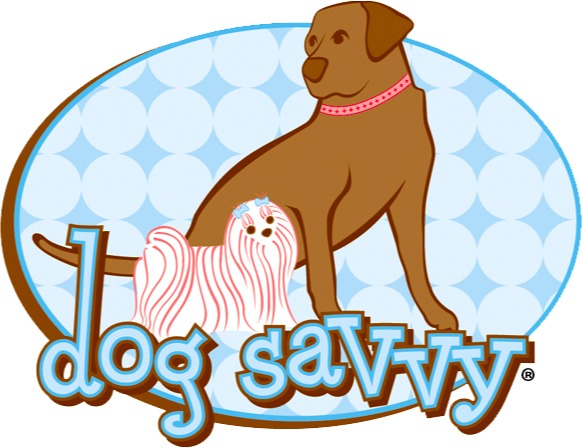What Every Pet Owner Should Know About Grooming
Here’s what professional groomers like Dog Savvy Founder Robb Horen wish more people understood about pet grooming
By Kait Weir - June 17, 2025
Why grooming is about more than just good looks
Whether you're a new pet parent or a lifelong animal lover, grooming is often misunderstood as merely cosmetic. In reality, it plays a vital role in your pet’s overall health and wellbeing. Here’s what professional groomers like Dog Savvy Founder Robb Horen wish more people understood.
Dog Grooming: More Than Meets the Eye
1. Grooming = Health Care
Regular grooming isn’t just about appearance. It prevents painful matting, skin infections, ear issues, overgrown nails, and parasite infestations. Dogs who are groomed consistently are healthier and more comfortable—and they see grooming as a normal, stress-free part of life.
2. Every Breed Needs It
Even short-haired dogs benefit from routine grooming. Brushing helps remove dead hair, distribute natural oils, reduce shedding, and maintain skin health. Neglecting grooming can lead to subtle but serious issues.
3. Matting Is Painful, Not Just Messy
Mats don’t just look bad—they hurt. They pull on the skin, hide parasites, restrict movement, and can even cut off circulation. Severe matting can lead to skin infections or hematomas. Groomers trained in "humanity over vanity" prioritize the animal’s comfort over appearance.
4. Ear Cleaning Prevents Pain
Dogs with floppy ears or a history of infections are especially prone to issues. Left unchecked, buildup can cause painful, chronic conditions requiring vet intervention. Routine grooming keeps this simple and preventable.
5. Nail Trims Are Non-Negotiable
Overgrown nails affect a dog’s gait and can cause joint issues. If you hear clicking on your floors, it’s time for a trim. Regular nail care also makes the process less stressful over time.
6. Early Desensitization Pays Off
Introducing puppies—and fearful adult dogs—to grooming slowly and positively sets them up for lifelong success. A good groomer knows not to rush a puppy into a full haircut on the first visit. Trust is key and must be built with care.
7. Groomers Are Often the First to Spot Health Issues
A professional groomer does more than bathe and brush—they notice lumps, rashes, infections, and behavioral changes that may need veterinary attention. They’re an essential part of your pet’s health team.
Yes, Cats Need Grooming Too
Cats may be self-cleaners, but that doesn’t mean they’re maintenance-free.
Brushing Is Key
Regular brushing helps reduce matting, especially in long-haired breeds, and prevents hairballs. It also gets your cat used to being handled, which is helpful for vet visits and grooming sessions.
Nail Trims Aren’t Optional
Without proper outlets like scratching posts, a cat’s nails can grow too long and become painful or embedded in their paw pads. Regular trimming prevents injury and furniture destruction alike.
Poor Grooming = Potential Illness
If your cat suddenly stops grooming, it’s a red flag. Greasy, matted, or unkempt fur may signal pain, obesity, arthritis, or dental issues.
When Professional Help Is Needed
Cats often need professional grooming when they’re unable to maintain their coat. Long-haired cats may benefit from a lion cut to remove severe mats and keep them comfortable. Even short-haired cats may need a bath or trim due to illness or mobility issues.
Warning: Attempting to groom a cat at home can be dangerous for both pet and owner. It takes experience, a calm demeanor, and feline-specific handling skills.
How Often Should You Groom Your Pet?
Dogs That Shed
-
Every 6–8 weeks for breeds with undercoats (Golden Retrievers, Aussies, etc.) to control shedding and maintain healthy skin and nails.
Dogs That Need Haircuts
-
Every 4–6 weeks for non-shedding breeds like Shih Tzus, Doodles, and Yorkies.
-
Budget Tip: Alternate between full haircuts and "tidy ups" every 4 weeks to maintain coat health without breaking the bank.
Grooming Cats
-
Brushing at home weekly, and professional grooming as needed—especially for senior or long-haired cats.
Building a regular grooming routine reduces stress for your pet and makes grooming feel like a normal part of life—not a traumatic event.
Is Grooming a Luxury? Not at All.
Grooming is not optional—it’s part of responsible pet ownership. If you can’t commit to basics like nail trimming, ear cleaning, and brushing, you risk your pet’s physical and emotional health.
Before getting a pet, consider the time, financial, and emotional investment required to properly care for them. Pets aren’t free—and that includes their grooming needs.
The Non-Negotiables of Pet Grooming
There are three grooming tasks you must never skip:
-
Nail Trimming – Prevents pain, deformity, and injury.
-
Ear Cleaning – Helps avoid infections and vet bills.
-
Coat Brushing – Stops matting and helps spot health issues early.
Neglecting these basics can cause real suffering. As a groomer who has seen nails embedded in paw pads, mats blocking a dog’s ability to relieve itself, and ears too painful to touch—these are not optional services. They are critical acts of care.
Grooming Tips for Colorado Pet Owners
Living in Colorado brings unique grooming challenges and opportunities. Here’s what to watch out for:
1. Dry Air = Dry Skin
Use moisturizing shampoos and brush regularly. Omega-3 supplements may help.
2. Seasonal Shedding Swings
Increase brushing in spring and fall to manage coat changes.
3. Don’t Skip Winter Grooming
Matted fur traps moisture and tightens in cold weather. Keep paws trimmed and use paw balm against salt and snow.
4. Summer Sun and Altitude
High UV exposure can burn light-colored or thin-coated pets. Never shave double-coated breeds—just remove undercoat and mats.
5. Outdoor Adventures = More Baths and Checks
Check your pet for ticks, burrs, and injuries after hikes and play. Trim paw fur to prevent debris buildup.
6. Year-Round Paw Care
Protect from snow, ice melt, hot pavement, and dry trails. Use booties or balms as needed.
7. Hydration Supports a Healthy Coat
High-altitude air dries out skin. Make sure your pet always has fresh water and a balanced diet.
Final Thoughts
Grooming is an act of love and a pillar of responsible pet care. Whether your companion is furry, fluffy, or somewhere in between, maintaining a regular grooming schedule ensures they look good, feel great, and stay healthy for years to come. For professional, stress-free grooming services and more information, visit https://www.dogsavvy.com/


